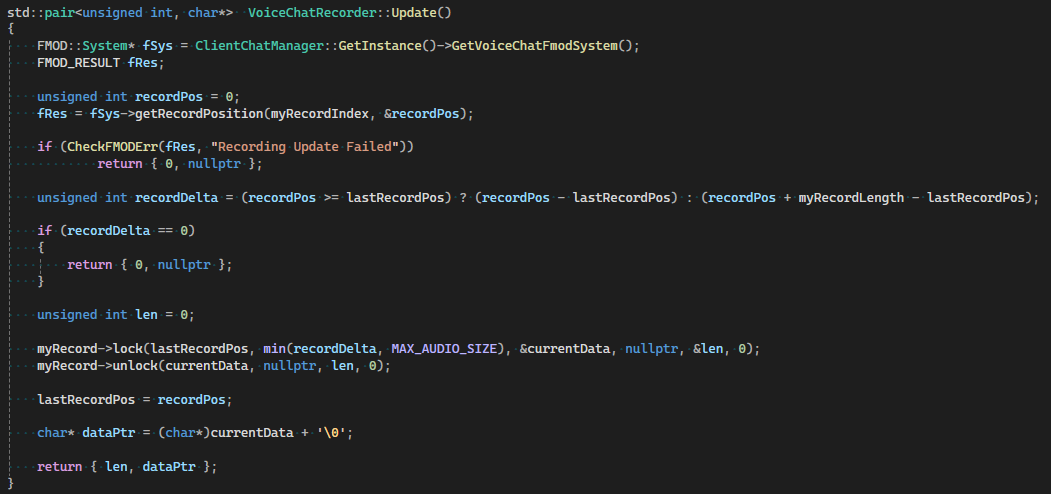Process
I started with trying to find a a good library to record, and playback, audio. I settled with FMod since that's a Library that I have some experience with. It would also simplify the proximity part. The goal with FMod was to then extract raw data, in form of a char pointer, from the sound and then send it to another client for recreation of the sound.

The Code used for recording
I started by looking at FMod's example for recording. In their example they create a sound and get a index for a input device. They then use these to start a recording on that specific sound. It's also important to notice that they create a sound with a circular buffer with the length of one second (calculated with the microphones hertz). Altough their code for recording worked for what I needed, my method for playback would need to be changed since I can't just play it like they do.
The code I used for recording was pretty much ripped out of the example from above. The biggest change was to allow the use to choose which input device they want and that all the code for this should run on a seperate thread. I also limited the hertz of the audio to 16000, since that made it so that the size of the data was within a certain limit (under 512 bytes).
To then extract the data I used the locking and unlocking of the sound. Since the sound has a circular buffer, I just need to add the length the last bit of data to the offset and then take our current position in the sound minus the offset to get the new length. I then take the char array, and it's size, and use winsock2 to send it to the server. All the server then does is send it to all other clients.
For the playback on the other clients, all I had to do, in theory, was to then recreate the sound by feeding in the char array in the name slot and use the FMOD_OPENMEMORY setting. after that I would just need to play the sound.
